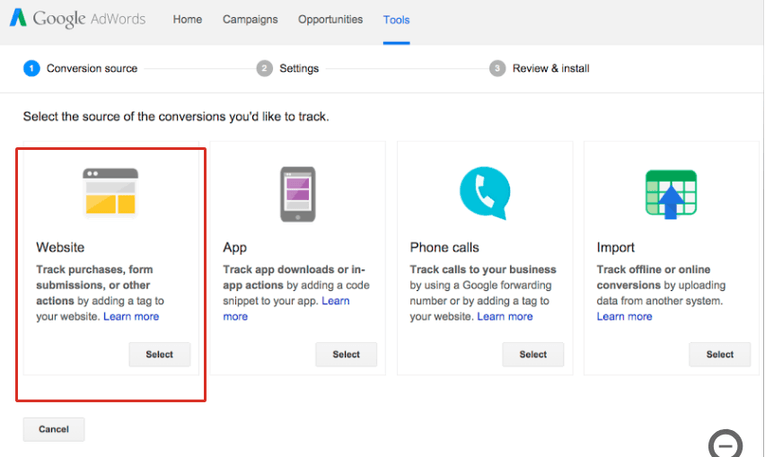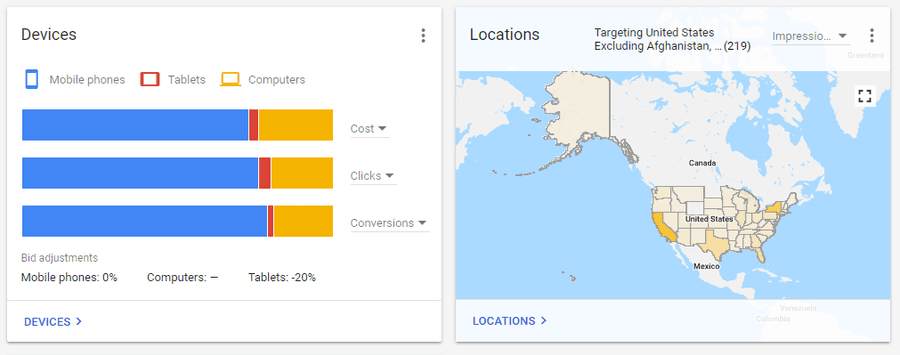4 Things to Look at When You’re New to a Google Ads Account
Whether you’re fresh on the job or you’re taking over a paid search account, it can be difficult to wrap your head around a new Google Ads account. After all, there are so many elements to take in.
As someone who knows Google Ads as well as I know Wheel of Fortune (a.k.a. like the back of my hand) and has completed countless paid search audits for prospective clients, I’ve gained some wisdom over the years.
Here are four things you should always check out in order to digest what’s exactly happening in a given Google Ads account.
1) Best practices
Before diving into metrics, you should always check out the account settings to get a high-level overview. From a technical standpoint, you should first check to see what conversions and audiences are being tracked.
I like to look for things like what attribution model the account uses; I always cross my fingers that’s not last-click attribution. Last-click attribution gives the click just before the conversion event (like a purchase or an email submission) 100% of the attribution credit. Oftentimes, multiple clicks preempt the conversion; a last-click model gives too much weight to this final touchpoint. There are better attribution models grant that credit to those touchpoints, which allow advertisers to optimize the account more effectively.
When I look at audiences, I check on whether or not the account has website audiences or customer lists to take advantage of. I also look for any untapped potential with Google Analytics audiences.
Once you have a better understanding of the account’s technical details, I recommend looking at the overall account structure. Are campaigns segmented in a way that makes sense? Are budgets allocated effectively? Are users seeing a specific ad for each specific query? These are commonly overlooked areas.
Another important setting to note is each campaign’s bid strategy. Is the account using any of Google’s Smart bidding or AI-driven machine learning strategies? If it’s using manual CPC bidding, is there a consistent strategy being applied? Bid strategies are a huge factor in campaign performance. Mismanagement here can lead to inefficiencies.
2) Targeting
Looking into targeting can seem overwhelming, so take it step by step.
First, identify what campaign types are being used. Is the account using search, display, video, and shopping campaigns?
Then, dive into each campaign type. When examining search campaigns, check to see if they’re utilizing all match types. Is there a consistent keyword, search query, and negative keyword strategy?
Next, check to see if campaigns are targeting specific audiences and what the branded vs. non-branded keyword breakdown is. Once you’re ready to look into the remarketing campaigns, take note of the audiences in use and if there’s opportunity for expansion.
This targeting review is essential for every Google Ads account, but it’s especially relevant to e-commerce accounts. For e-commerce, campaign structure, product groups, and product spend have a huge impact on the overall return on ad spend (ROAS) performance.
3) Optimizations
Once you’ve got a good sense of how the account is set up, it’s time for perhaps the most time-intensive step. It’s crucial to identify gaps within the account and begin to outline the necessary optimizations required to improve performance.
Not sure where to start? I first like to pull reports on budgets and impression share. This will give you a quick look at opportunities for growth and if spend needs to be cut. Keyword and search term reports can help you pinpoint strategic optimizations and quick wins.
You should also note highlights about devices, locations, audiences, and ad schedules. Segment adjustments in each of these areas can seriously boost the account.
4) Creative & testing
Last but certainly not least, you should always review the account’s text ads, display ads, and landing pages. All accounts should have multiple ads per ad group (at least 3!). As for display ads, accounts should include images that cover various inventory sizes or, better yet, use Responsive Display Ads.
When you pull ad creative reports, look for insights like which messaging converts the best or which image drives the best click through rate. I like to highlight opportunities to maximize that message and ensure ads speak specifically to each ad group and audience.
Conversion rate optimization opportunities should not be overlooked within paid testing strategies.
What’s next?
Google Ads accounts seem complex, but they don’t have to be. By breaking down your analysis of the account into these four buckets, you should be able to get a good sense of performance and where to go next relatively quickly.
By understanding whether an account is following best practices, targeting, areas for improvement, and creative, you’ll be at a great starting point to develop a digital strategy.
Feeling a bit overwhelmed? We’re here to help. Schedule a comprehensive audit with our expert team now.

Eric Yarnik is a Northwestern University Alum who considers writing the Perfect Search Ping Pong Power Rankings Column to be one of his favorite tasks at work. If he had to pick one fictional character to be friends with, it’d have to be the one who lives in a pineapple under the sea.



